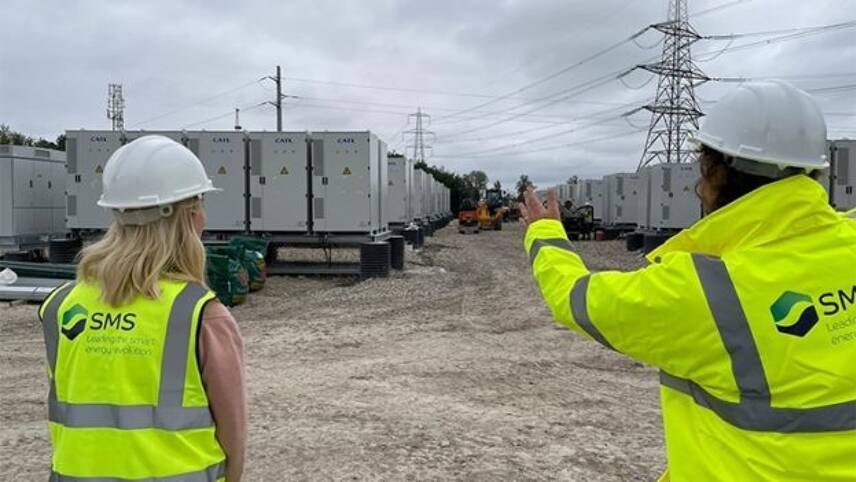Register for free and continue reading
Join our growing army of changemakers and get unlimited access to our premium content

Pictured: A 50MW facility brought online in Burwell by SMS in January. Image: SMS
Figures released on Monday (11 April) by RenewableUK confirm that the total capacity of energy storage projects in operation, under construction, consented and in the planning system now stands at 32.1GW. This is almost double the total capacity recorded under RenewableUK’s same workstream last year, when the headline figure was 16.1GW. The data is listed in the RenewableUK EnergyPulse Energy Storage report.
Only a minority of the pipeline is either fully operational (1.59GW) or under construction (1.45GW) – more than half (18.6GW) consists of projects that are in the development or planning stages. Nonetheless, the UK’s operational energy storage capacity has grown by a considerable 45% year on year.
RenewableUK has described the recent growth of the UK’s energy storage pipeline as “staggering” and emphasised how this growth will be essential to helping grid operators balance electricity supply and demand as more renewable generation comes online and as sectors like transport and heating begin to be electrified at scale. According to the trade body, the UK needs to host 30GW of flexible energy capacity by the end of the decade.
The UK Government’s Energy Security Strategy, published last week, is headlined with an ambition for 95% of the UK’s electricity generation to be low-carbon by 2030. Unabated fossil-fuelled electricity generation should then come offline by 2035. The Conservative Party’s approach prioritises growing nuclear and offshore wind to meet these goals.
RenewableUK believes that, as well as the UK Government’s increased support for renewable electricity in the main, the growth of the energy storage pipeline is attributable to a decision to relax planning rules, first announced in summer 2020 and enacted in December 2020. The change enabled local planning authorities to make decisions on larger projects, lifting the previous 50MW cap for England and previous 250MW cap for Wales, after which point Government intervention was previously needed.
This decision is believed to have helped the UK’s renewable energy investment market remain attractive despite Covid-19-related disruptions. Globally, investment in energy storage fell in the first half of 2020 for the first time in a decade.
According to RenewableUK, the average energy storage project size is now 54MW, up from 2MW within a ten-year period. The predominant technology remains lithium-ion batteries.
“The fact that the battery storage pipeline has doubled within the space of twelve months shows that the enormous appetite among investors for this technology is continuing to grow fast – but developers still need access to cheaper capital,” said RenewableUK’s director of future electricity systems Barnaby Wharton.
“The Government can help by setting out a long-term vision for the sector, including a clearer and more stable route to market for energy storage. Although we’re making great progress, we’re still some way from delivering the 30GW of operational flexibility which the Government requires by 2030”.
Earlier this month, the Government confirmed plans to create a Future System Operator (FSO) – an independent, public body that will oversee the energy network. Integrating emerging technologies, like energy storage systems, in the name of improving grid security, will be a key FSO focus.
Field
In related news, energy storage company Field has aquired a 20MW battery storage site in Newport, Wales, this week. The acquisition brings the firm’s total pipeline to 775MW.

